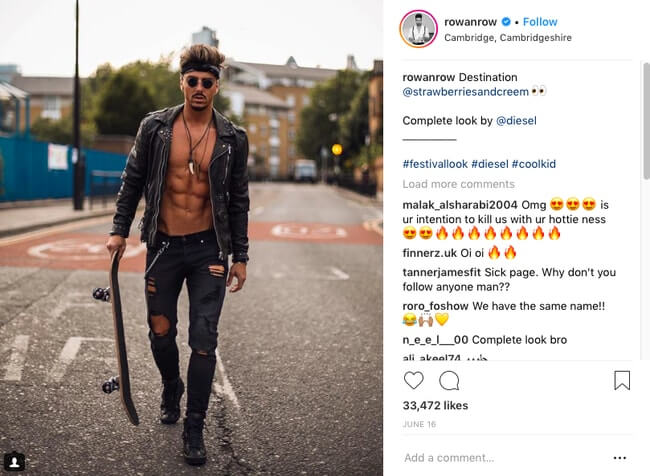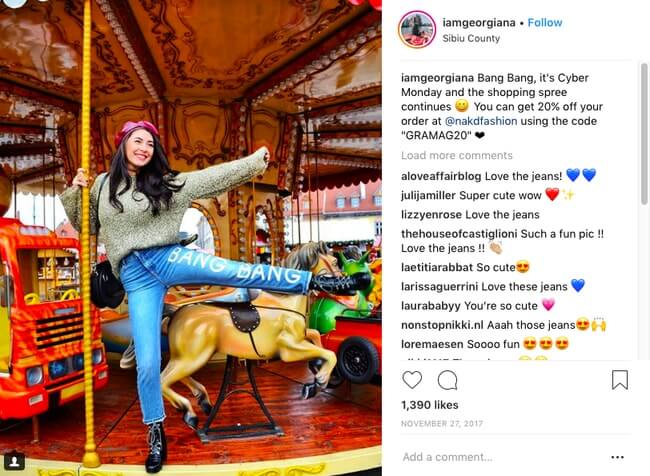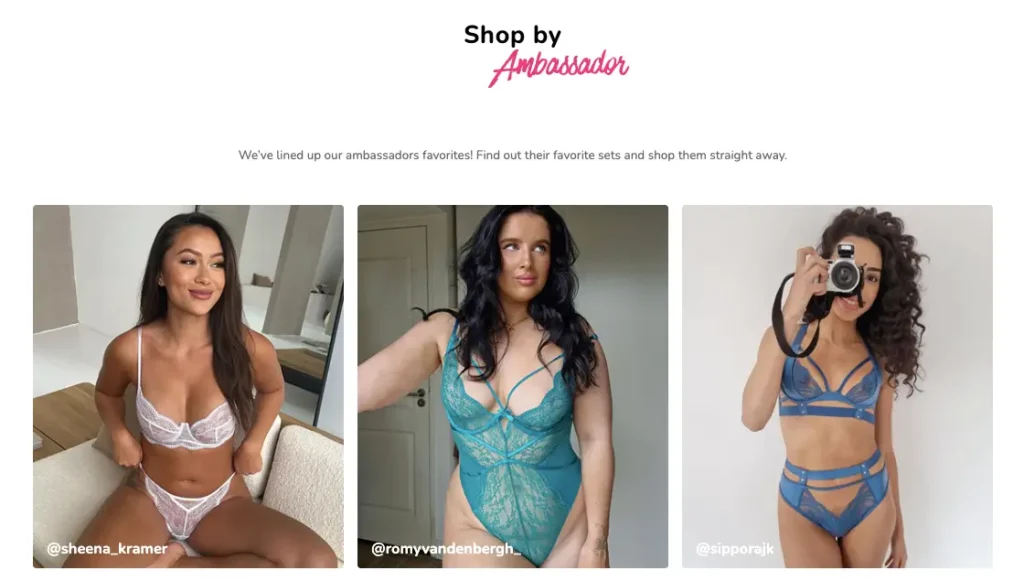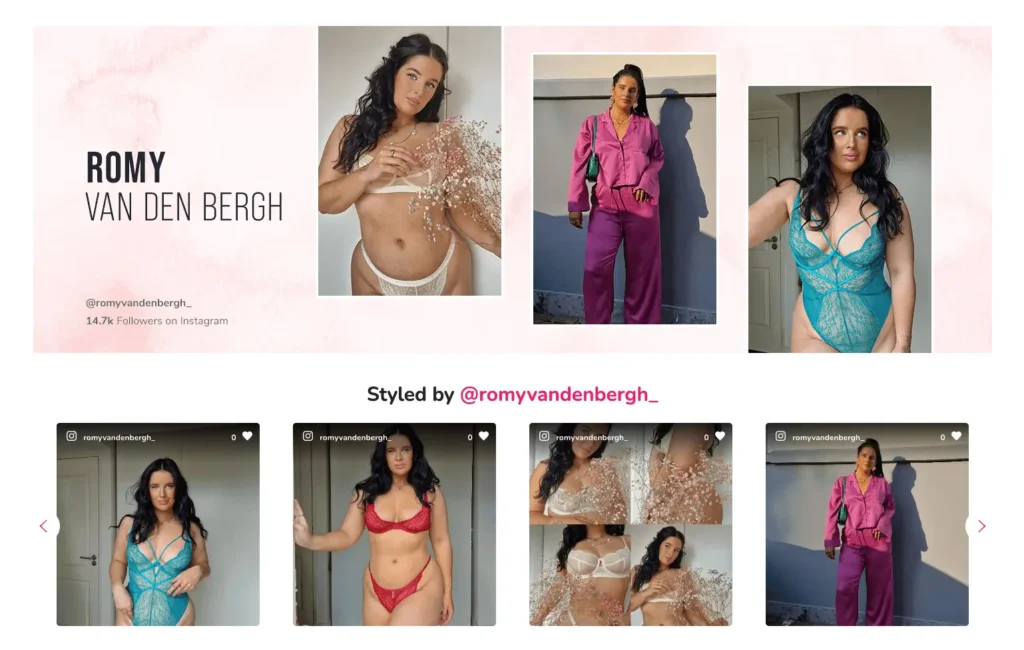Case studies
Industries
Resources
TikTok Collection
NEW
Table of Contents
Read complete guide to your influencer marketing strategy to learn more about this area of marketing as well as best practices for building an effective strategy, common mistakes to avoid, examples and we answer common questions about influencer marketing strategy.
An influencer marketing strategy is a dynamic approach employed by brands to leverage the reach and authority of influential individuals within specific niches to promote their products or services. It involves identifying and collaborating with these influencers, who possess a dedicated and engaged audience on social media platforms like Instagram, YouTube, TikTok, or blogs. Through strategic partnerships, brands aim to tap into the influencers’ credibility and rapport with their followers, thus gaining access to a targeted audience that aligns with their brand values and objectives. This form of marketing capitalises on the influencers’ ability to authentically endorse products, generating buzz, credibility, and ultimately driving consumer behaviour, whether it’s raising awareness, fostering brand loyalty, or boosting sales. A successful influencer marketing strategy hinges on careful planning, authentic partnerships, and continuous evaluation to ensure alignment with brand goals and audience interests.
There are many different types of influencers out there, these influencers can be broken down into four main types, here are the definitions for each type:
User Generated Content creators and influencers both wield significant influence in today’s digital landscape, yet they differ in their origins and approaches. UGC creators, thought of by some as micro-influencers, are everyday individuals who generate content organically, often driven by their passion or interest in a particular topic or niche. They may not have a massive following initially, but their authenticity and relatability resonate deeply with their audience. On the other hand, influencers actively cultivate their online presence to build a dedicated following, often partnering with brands to promote products or services in exchange for compensation. While influencers typically have a larger reach and more curated content, UGC creators offer a grassroots authenticity that can foster stronger connections with their audience. Both play essential roles in shaping consumer perceptions and driving engagement in today’s digital landscape.
Influencers typically have established social media followings and leverage their personal brand to promote products or services, often through sponsored content. User Generated Content Creators, on the other hand, generate content that may or may not be sponsored, but they primarily focus on creating authentic, engaging content that resonates with their audience, often without a large following or personal brand.
The influencer doesn’t want to lose their individual tone or uniqueness. To aid the process, the most important thing is to have a very clear idea of what you want for your brand out of this campaign, then plan to make it happen. That way, you will be able to make concise proposals to the influencer when discussing the type of content that will be produced.
This is important because their content will inspire your followership it post similar content with your products – something that will establish a User Generated Content strategy for your brand. For example, Unisa, an international shoe brand, demonstrates the direct benefits a brand receives when they reward their online community with recognition through their 16.03% increase of conversion rate.
But a lot of it starts with your influencers and how well you communicate with them.
One of the most relevant results from influencer studies is that the majority of influencers consider it very valuable to have brand collaboration when it comes to creating a message. Thus, it is important to give them clear guidelines about the type of communication you’re looking to achieve.
Provide them with useful details, which they wouldn’t find from other sources – such as brand trivia and product history, as well as professional resources like product photos or even the chance to call on a team of production staff. By no means, however, does this mean that the influencer should simply post a message that has been created by the brand. The message needs to be the fruit of a collaborative process.
Working as a team involves taking the best that each contributor has to offer in order to end up with a solid end product. The influencer knows their public (which is also your public) and knows how to approach them; you know your brand, your product and the benefits that it offers. Make the most of this knowledge pairing.
Content creation is a stressful practice these days, and everyone wants new things to post. This is where you have a leg-up as a brand. You’re offering them something new, and, if you’re creative, you can offer them something irresistible – for you both. The collaboration, then, is above all a matter of developing a win-win situation where both you and the influencer will benefit on a professional level.
A lot of brands want to know how to find influencers. This can be done in a number of different ways. Influencers can be found across various social media platforms, including Instagram, YouTube, TikTok, and Twitter, where they engage with their followers through content creation and interaction. Brands often utilise influencer marketing platforms and agencies to identify and collaborate with influencers who align with their target audience and brand values. Additionally, industry events, networking functions, and online communities dedicated to influencer marketing are valuable resources for discovering potential collaborators. By leveraging these channels, brands can connect with influencers who possess the reach, authenticity, and resonance necessary to effectively amplify their marketing efforts and connect with their desired audience.
The adoption of a User Generated Content platform can help you to highlight some influencers who already like and are posting about your product. From there you can contact them to further a working relationship.
You can analyse the social media currently being posted featuring your products using a UGC platform like Flowbox. Instead of reaching out to influencers who may not be aware of your product, brands can use Flowbox’s whitelisted users feature to find and utilise social media users who are already posting about their brand. By whitelisting Instagram users in Flowbox, brands can automatically label content from these profiles as ‘Whitelisted’, eliminating the need for rights requests for these posts. This feature is particularly useful for brands collaborating with content creators and influencers, as it ensures they have the rights to re-distribute future posts from these users. With this tool, brands can streamline their content collection process, focusing on users who are genuinely engaged with their brand, thereby enhancing their social media marketing strategy.
Consumers want to hear from other consumers. Discover how Flowbox can help you build an effective influencer marketing strategy by booking a demo now.
Influencers have become a crucial aspect of marketing today due to their unparalleled ability to connect with and influence audiences in a highly personalised and authentic manner. Unlike traditional advertising methods, influencers offer a more relatable and genuine approach to promoting products or services, which resonates strongly with modern consumers who increasingly value authenticity and peer recommendations. Their social media presence allows brands to tap into niche communities and target specific demographics with precision.
Influencers often have a loyal and engaged following, granting brands access to a pre-existing audience that trusts and respects the influencer’s opinions and recommendations. This direct line of communication fosters deeper connections between brands and consumers, leading to increased brand awareness, higher engagement levels, and ultimately, improved conversion rates. In an era dominated by digital and social media, influencers play a pivotal role in shaping consumer preferences, driving purchasing decisions, and ultimately, driving business success.

As with any other strategy, the first issue for your influencer marketing strategy is to clearly understand what you want to achieve. Your aim might range from something small such as getting a certain number of likes on a photo to something much bigger like reaching a specified number of daily sales. Other examples of campaign objectives could be: garner loyalty in new customers, generate buzz around your brand, achieve sales conversion rates, establish a relationship with the public, improve B2B ties, increase the number of installations of your app, get a certain number of users posting on your hashtag, to name but a few.
This first step will define the whole influencer marketing strategy, meaning that it’s crucial to get things as clear as possible before the planning stage. Try to set out realistic, quantitative aims that will be measurable over time – that way you can take that information and analyse it in the future. (Meaning your campaigns just keep getting better!)
As outlined in the previous section, the entire strategy will unfold from the central campaign objective. Once you’ve clarified what you wish to achieve, the rest of the strategy will develop from it.
One of the most important factors to take into account is the budget for your campaign. First and foremost, you’ll need to determine how much you’re going to invest before calculating how much the return will be. Remember that the costs can include diverse expenses such as research, product samples, special promotions for the public and the cost of the strategy-planning itself. The size of the global influencer marketing market has grown by over threefold since 2019. By 2024, it was projected to achieve a landmark figure of $24 billion USD.
What about yours? Is your budget growing? Does your campaign have many messages or just one? Does it need one big-name influencer or lots of smaller-scale ones at the same time? Do you have ample time to plan the campaign content or do you need to act right now?
In the world of influencer marketing, many brands simply opt to send a product sample to the influencer and wait for the related post to appear. In the short run, this practice can lead to disappointing results like an inadequate message. However on some occasions it can result in an instant hit, especially when timing and spontaneity are taken advantage of.
A different, generally more effective way of doing things is to plan a campaign that will be sustainable over time. A perfect example of this can be seen in many fashion campaigns. In this sphere, what tends to give better results is to outline a campaign many months before launch, including all seasons and collections for the upcoming year, anticipating its focus.
But what kind of content are you going to request from your influencers? Event hosting? Promotion on social media? Affiliate links? Sponsored posts?
85% of influencers have reported sponsored content as the most requested influencer service. But this ultimately comes down to what you’re looking to achieve. Don’t just do it because you hear it works – how does it work and for what purpose? This will get you actual results rather than just the right to say that you executed an influencer marketing strategy.

Once you’ve determined your influencer marketing strategy – its duration and its spread (the number of posts daily, weekly, or monthly) – co-creating is the next logical step.
Here you decide what each post says and how the content will evolve during the campaign. This will put to test the ability of the brand and the influencer to work as a team, creating effective messages which fit the brand’s objectives and are also natural as part of the influencer’s feed. This is the stumbling block which needs to be emphasised the most when collaborating with influencers, though there are also other details to consider.
While the consumer has learned to ignore messages in traditional media or experience banner blindness online, influencer marketing strategy is an area that is not overloaded with offers and logos. This means that a message in this sphere does not necessarily have to be the most creative or eye-catching. Rather, it needs to be suitable with the influencer’s profile, to provide something that users will want to talk about and share.
To reach this stage, everything else needs to have been set out and decided. So what now?
Don’t even think about sitting back and leaving things up to the influencer while you just wait to see the results. According to Neoreach.com, the brand needs to do a detailed tracking of the campaign’s evolution in order to get figures that will later help you with measurement and assessment.
You’ll need to prepare spreadsheets where you can enter all of the tracking data. You could also use specialised programs for this purpose (here is list of the Top Five according to Techradar). Or if you are unable to dedicate the necessary attention to the tracking process, the best thing may be to hire a professional team who will perform the task for you.
You’ll also need to track the actions of the campaign and user reactions, taking screenshots of everything. (Trust me, you’ll want these later!)

This is an essential step for any campaign. It is the phase that will show if all the effort has paid off and what aspects could be improved upon. Doing a campaign without a precise measurement of results is like throwing away half the work involved. The Word of Mouth Marketing Association (WOMMA) advises that there are two stages of measurement:
For Launch and Hustle, the five key factors to consider are:
Once you have all the final figures, you’ll need to work out the ratio obtained. This will be based on the initial reach that you determined and your original objectives, that way you can determine whether the chosen influencer was the most effective for both your brand and for the starting aims of the campaign. Remember to always pay attention to the reactions that your campaign generated. An example of a tool which can help with this is Traackr.
Practice makes the master!

In an article from Inverted Marketing, there is an outline of three ways in which Influencer Marketing will change in the future.
But that’s not all, as Inverted Marketing says, once brands realise the impact that small-scale influencers can have on the way our message reaches the public, we will learn to appreciate the true worth of natural interactions. We will see the value that everyday people can add to a brand when they choose to make it a part of their daily lives. Once that moment arrives, influencer marketing will have become an automatic system, which regularly rewards individuals for online sharing of their favourite brands, regardless of the size of their audience.
eCommerce brands leverage influencers to scale their operations by tapping into the influencers’ established networks and credibility within specific niches. These partnerships enable eCommerce brands to access highly targeted audiences that align with their target market, thereby increasing the likelihood of conversions and sales. Influencers act as trusted intermediaries who introduce their followers to new products or services, fostering a sense of authenticity and trust that traditional advertising often lacks.
Influencers can provide valuable UGC and testimonials, which further bolster the brand’s credibility and appeal to potential customers. By strategically collaborating with influencers, eCommerce brands can effectively expand their reach, drive traffic to their online stores, and ultimately accelerate their growth trajectory.
With the information at your disposal, you’re nearly ready to embark on your influencer marketing campaign. However, before diving in, it’s crucial to be mindful of prevalent mistakes in influencer marketing and take proactive steps to steer clear of them.
Relying solely on follower counts can be misleading as they can be artificially inflated through purchased followers, leading to influencer fraud. Simply gauging influencers by their follower numbers may not yield the desired outcomes. Additionally, even authentic influencers might not necessarily align with your brand’s target audience or engagement objectives.
To mitigate this risk, leverage influencer fraud detection tools and scrutinise influencers using fake follower checkers. Implement an additional screening process focusing on factors like content quality and follower demographics to ensure compatibility with your brand.
Choosing not to lean into authenticity and creativity is a common eCommerce marketing mistake. One common pitfall is brands imposing excessive restrictions on influencers, undermining the essence of influencer marketing, which thrives on authenticity. Overly prescriptive directives can result in content that feels forced or overly promotional, alienating the influencer’s audience.
To circumvent this issue, prioritise respecting the creative autonomy of content creators. Provide them with general guidelines and prompts while entrusting them with the creative process. This approach fosters authentic content creation that resonates with the influencer’s audience while aligning with your brand’s objectives.
The payment structure for influencers significantly impacts campaign profitability. While various payment models exist, it’s essential to choose one that suits both your budget and campaign goals. For instance, product seeding campaigns may entail gifting products to micro and nano-influencers without monetary compensation.
Without clearly defined goals and objectives, it’s easy for influencer marketing campaigns to lose direction and effectiveness. Brands should establish specific, measurable objectives to guide their influencer partnerships and measure success accurately.
Failing to consider the relevance of an influencer’s audience to your brand can result in ineffective collaborations. It’s essential to align with influencers whose followers match your target demographics and interests to maximise engagement and impact.
Building strong relationships with influencers is key to long-term success in influencer marketing. Neglecting to nurture these relationships can lead to disengagement, missed opportunities, and ultimately, ineffective campaigns.
Looking for more Instagram tips? Head to our complete guide to Instagram Marketing, where you’ll find everything you need to know about promoting your products on this crucial platform.
An Influencer strategy combined with a User Generated Content strategy can be a winning combination, exemplified by the success of Hunkemöllers campaigns. To capitalise on the power of both influencer marketing and UGC Hunkemöller’s website boasts a very clever idea: A shop by ambassador page.

Hunkemöller’s “Shop by Ambassador” feature, enabling users to tailor their eCommerce shopping journey according to their individual preferences. This empowers customers to browse products through the lens of their preferred influencers, accessing dedicated ambassador-specific pages showcasing them adorned in Hunkemöller’s lingerie. The brand works with influencers like Romy van den Bergh for example, shoppers can check out the looks she has styled on her ambassador page directly and get inspired by for example someone with the same body type as them.

To ensure influencers don’t misrepresent your brand, establish clear brand guidelines, provide comprehensive briefs, vet influencers thoroughly, monitor their content regularly, offer feedback when necessary, and include clauses in contracts outlining brand representation expectations and consequences for violations.
Instagram, TikTok, and YouTube are the most popular social media platforms for influencer marketing due to their large user bases, visual content focus, and influencer-friendly features such as Stories, Reels, and collaborations.
Target influencers based on relevance to your brand and audience rather than just their follower count. Micro-influencers with smaller but engaged audiences often yield higher conversion rates and offer a more cost-effective option for niche targeting. Focus on alignment with your brand values and audience demographics.
Influencer marketing strategies include collaborating with influencers for sponsored content, hosting influencer takeovers, organising influencer events, implementing affiliate marketing programs, engaging in influencer partnerships, leveraging UGC, and integrating influencers into your overall marketing campaigns. Tailor strategies to suit your brand objectives and target audience.
Determining the most effective form of influencer marketing depends on various factors such as your target audience, campaign goals, and budget. Generally, however, authentic and genuine collaborations that resonate with the influencer’s audience tend to be the most effective, regardless of the specific format, whether it’s sponsored content, product reviews, or influencer-hosted events.
An Influencer Marketing Strategist is a professional responsible for planning, developing, and executing influencer marketing campaigns. They typically analyse market trends, identify suitable influencers, negotiate partnerships, create campaign strategies, oversee campaign implementation, and measure performance to achieve the brand’s marketing goals effectively.
To optimise your influencer strategy, start by clearly defining your campaign objectives and target audience. Research and vet influencers meticulously, prioritising relevance, authenticity, and engagement over follower count alone. Develop detailed briefs and establish clear expectations and guidelines for content creation. Foster genuine relationships with influencers, providing them with creative freedom while ensuring alignment with your brand values. Track and analyse campaign performance metrics to iterate and refine your approach continually. Additionally, consider diversifying your influencer partnerships across different tiers and platforms to maximise reach and engagement.